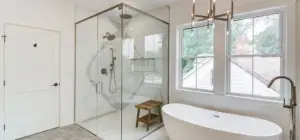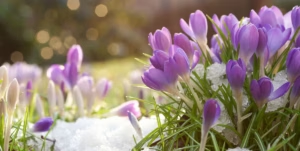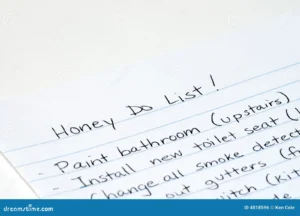Winterizing your home is one of the most important maintenance tasks you can do to prepare for the colder months. While it may seem trivial, the consequences of neglecting these steps can be costly. Proper winterization not only ensures your home is safe and comfortable during the harsh winter weather, but it can also lead to significant savings on energy bills. In this expanded guide, we will walk through essential winterizing tasks to protect your home and explain why each one is crucial to avoiding potential damage and inconvenience.
Turn Off and Drain Outdoor Water Spigots
One of the most common but preventable disasters during the winter is a burst pipe, which often starts with an outdoor water spigot. Water left in an outdoor spigot or hose can freeze during cold temperatures, causing the metal to expand. This expansion can crack the pipes, leading to water damage once the ice thaws. A simple solution is to turn off the water supply to outdoor spigots from the inside of your home and drain the pipes before the first freeze hits. This prevents any residual water from sitting in the pipes and freezing.
Even though it’s easy to overlook this step, repairing burst pipes can be incredibly expensive. Depending on the extent of the damage, it might not only affect the outdoor plumbing but also the inside of your home, leading to a significant mess. Flooding from a burst pipe can destroy flooring, furniture, and drywall, potentially costing thousands of dollars in repairs. Spending a few minutes turning off the water and draining the pipes can save you from this headache, as well as preserve your peace of mind throughout the winter months.
Additionally, consider using insulated covers for outdoor spigots. These covers are inexpensive and provide an extra layer of protection against freezing temperatures. If you live in a region that experiences particularly harsh winters, this added protection can be a smart investment to prevent spigot damage. Taking these preventive steps may seem like small efforts, but they go a long way toward ensuring the safety of your plumbing system throughout the cold season.
Insulating Your Attic Properly
Your attic is one of the most critical areas to address when preparing your home for winter. Without proper insulation, heat will rise and escape through the roof, significantly impacting your heating bill. One of the most effective ways to keep your home warm and energy-efficient is to ensure your attic has adequate insulation. Installing new insulation or improving the existing insulation can make a considerable difference in how well your home retains heat during winter.
In homes with ridge vents and soffit vents, baffles can be installed to promote proper airflow while keeping insulation in place. Baffles, when installed correctly, prevent insulation from blocking airflow through the vents, which can otherwise lead to moisture buildup and mold growth. Proper ventilation and insulation work together to ensure that your attic is both energy-efficient and free from potential moisture damage, which can lead to long-term structural issues in your home.
It’s important to choose the right type of insulation for your attic, depending on your home’s needs. Options like fiberglass, cellulose, and spray foam are popular choices, each with its own benefits. While fiberglass is affordable and widely used, spray foam is more efficient at sealing gaps and preventing air leaks. In any case, having a professional inspection of your attic insulation can help determine the most effective solution for your home. Proper insulation not only saves on energy costs but also prolongs the life of your roof by preventing ice dams that form when warm air escapes into the attic, melts snow, and causes water to refreeze along the eaves.
Sealing Windows and Locking Them Properly
Windows are another major source of heat loss in homes during winter. Even if your windows are closed, they may still allow cold air to seep in if they are not properly sealed. One effective step in winterizing your home is to inspect all windows for drafts and ensure they are locked securely. Locking your windows not only provides security but also helps seal the window tight, reducing the chances of air leakage.
For older windows, applying weather stripping or caulk around the frames can significantly reduce drafts. Foam tape and shrink-wrap window insulation kits are also effective, particularly for older windows that are not energy-efficient. If you have single-pane windows, upgrading to double-pane or storm windows can improve insulation and prevent cold air from entering your home. These energy-efficient windows feature gas-filled layers between the panes, which provide better insulation compared to standard single-pane windows.
It’s also important to check for any cracks or gaps around the window frames that could allow cold air to enter. Even small crevices can have a significant impact on your home’s warmth and energy efficiency. Using a thermal leak detector can help you identify areas where heat is escaping. Addressing these gaps not only keeps your home more comfortable but also reduces the strain on your heating system, leading to lower energy bills. Sealing your windows properly ensures that your home remains draft-free and comfortable throughout the cold winter months.
Stock Up on Ice Melt and Shovels
Winter storms can arrive suddenly, leaving you scrambling for supplies if you’re unprepared. One of the most essential items to have on hand before the snow hits is ice melt. This simple product helps prevent dangerous ice buildup on walkways, driveways, and steps, reducing the risk of slips and falls. It’s important to stock up on ice melt early because, once a snowstorm is predicted, stores tend to sell out quickly, leaving many people without this critical safety item.
Another must-have for winter preparation is a sturdy snow shovel. Having a durable, easy-to-handle shovel will make snow removal much easier when storms hit. Keep in mind that the right shovel can make a big difference in how effectively you can clear snow from your property. Ergonomic shovels reduce the strain on your back, and some even feature features that help break up hardened ice or snow more efficiently.
Shovels and ice melt are essential not only for convenience but for safety as well. Snow and ice buildup can cause accidents, so keeping your walkways and driveways clear is important. If you live in an area prone to heavy snowfall, it might also be worth investing in a snow blower. While it’s a more expensive option, it can save a lot of time and effort in clearing large amounts of snow. Make sure to perform regular maintenance on your snow blower before the season starts to ensure it’s in good working condition. Planning ahead for these winter necessities helps you avoid the stress and last-minute rush when a snowstorm is on the horizon.
Checking Your Sump Pump for Proper Functionality
While sump pumps are not always associated with winterization, they play a critical role in protecting your home from water damage, especially in regions that experience thaws after heavy snowstorms. A functioning sump pump prevents your basement from flooding during these thaw periods, making it an essential component of your home’s winter preparation.
It’s crucial to test your sump pump before winter sets in to ensure it’s in good working condition. If your area is prone to power outages during winter storms, you might also want to consider a battery backup for your sump pump. This way, even if your electricity goes out, your pump will continue working and prevent any potential water damage in your basement.
For added peace of mind, having a second sump pump as a backup can be a lifesaver if your primary pump fails. These inexpensive devices can save you thousands of dollars in potential water damage repair costs. Since winter thaws can lead to basement flooding, a working sump pump is key to preventing damage to your home’s foundation and valuable possessions stored in the basement. Make sure to test it regularly and inspect it for any signs of wear or malfunction before winter weather hits.
Inspecting Door Gaskets and Weather Stripping
Another area that can often be overlooked during winterizing is the condition of the gaskets on your exterior doors. Over time, gaskets and weather stripping can wear down, leading to gaps that allow cold air to enter your home. This might seem like a minor issue, but even small amounts of cold air can have a significant impact on your heating efficiency and indoor comfort.
To ensure your home is properly sealed, inspect the gaskets around your doors and replace any that are torn, cracked, or worn out. Weather stripping can also be added to doors that lack adequate insulation. It’s a relatively inexpensive fix but can make a big difference in how warm your home stays during the winter. Doors that are exposed to the elements, such as those leading to garages or outdoor patios, are especially important to check.
By ensuring that your doors are properly sealed, you prevent cold drafts from entering and reduce the amount of energy your heating system needs to maintain a comfortable temperature. It’s a simple step, but it contributes to a more energy-efficient home during the winter months. Don’t overlook this small but critical part of your winterization routine, as it can have a big impact on your comfort and your energy bills.
Tune-Up Your Heating System
Last but not least, scheduling a professional tune-up for your heating system is one of the most important steps in preparing your home for winter. Whether you rely on a furnace, boiler, heat pump, or HVAC system, regular maintenance ensures that your heating system is running efficiently and safely. A professional technician can inspect the system for any issues, clean the components, and ensure everything is functioning properly.
A well-maintained heating system not only ensures that your home stays warm during winter, but it also reduces the risk of breakdowns during the coldest months of the year. Without regular maintenance, heating systems can become less efficient over time, leading to higher energy bills and potentially expensive repairs. By having a professional tune-up, you can catch small issues before they become major problems, prolong the life of your heating system, and keep your home comfortable all winter long.
Additionally, consider replacing the filters in your heating system regularly, as dirty filters can restrict airflow and reduce efficiency. This is especially important during winter when your heating system is working harder than usual. By following these steps and ensuring your heating system is properly maintained, you can enjoy a warm and worry-free winter
For more helpful tips or if you have any questions, feel free to contact us at (617) 480–6836 or visit https://homeadditionma.com for more







